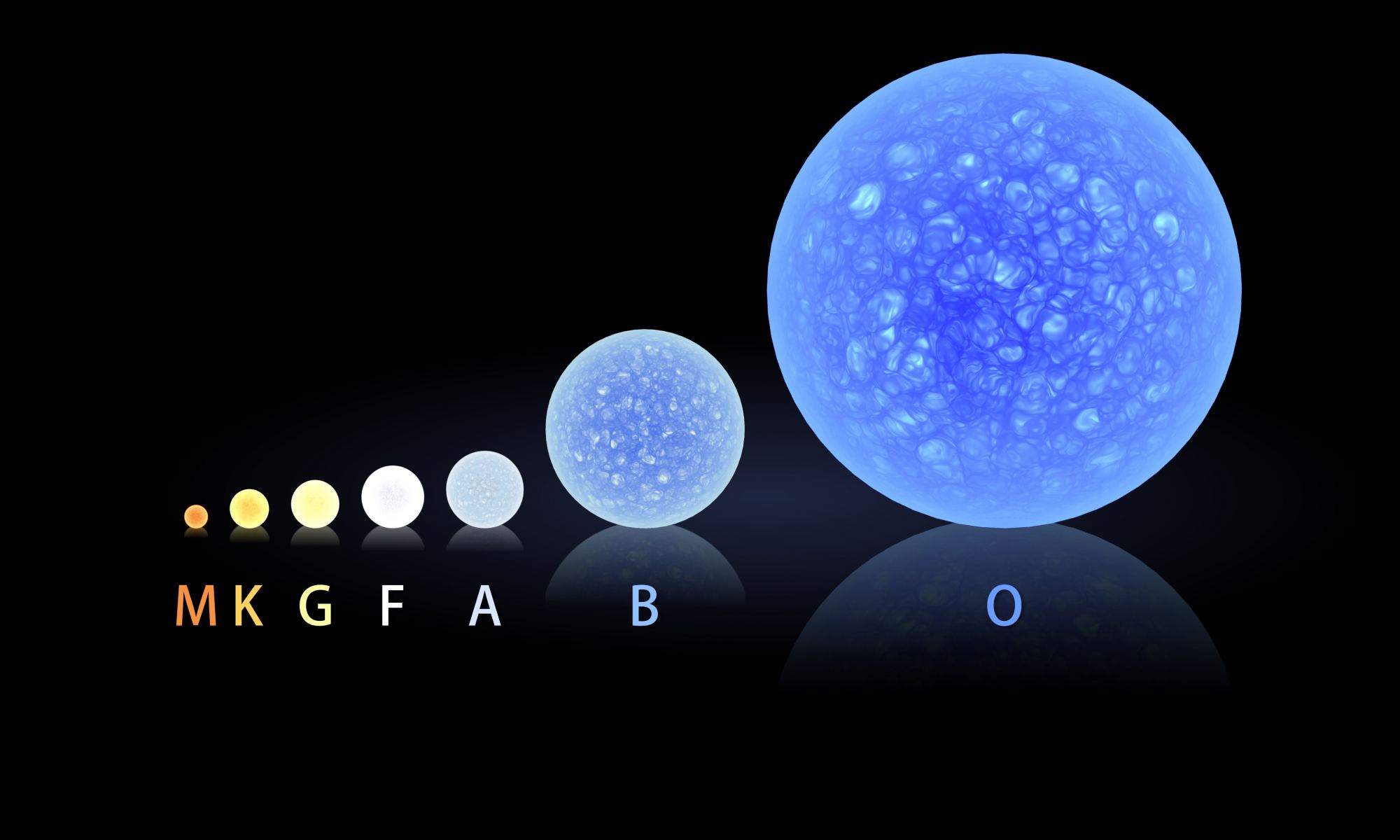
September 20, 2024 by Brian Koberlein
Collected at: https://www.universetoday.com/168644/could-stars-hotter-than-the-sun-still-support-life/
Although most potentially habitable worlds orbit red dwarf stars, we know larger and brighter stars can harbor life. One yellow dwarf star, for example is known to have a planet teaming with life, perhaps even intelligent life. But how large and bright can a star be and still have an inhabited world? That is the question addressed in a recent article in the Astrophysical Journal.
Stable main-sequence stars such as the Sun are categorized by color or spectral type, with each type assigned a letter designation. For historical reasons the categories aren’t alphabetical. Red dwarf stars, the coolest stars with the smallest mass, are M type. Then with each brighter, bluer, and more massive category is K, G, F, A, B, and finally O. The Sun falls into the G category as a yellow star. Each spectral type is then broken into smaller sections, numbered 0 – 9. The Sun is G2 star because it is at the warmer end of G-type stars.
As you go up the scale, the potentially habitable zone shifts farther from the star but also gets larger. That makes it more likely for a planet to be in the zone. But larger stars also have shorter lives, which might not give life enough time to evolve on a world. Then there are other factors that can be harmful for life. The largest stars emit a tremendous amount of ionizing radiation, which could strip planets of their atmospheres, or sterilize the surface of a planet. Because of this, the largest stars of the B and O types aren’t likely to harbor life.

But what about F-type stars? They are a bit brighter than the Sun and more white than yellow in color. They are also stable for around 4 billion years, which is long enough for life to evolve and thrive. And they also emit more ultraviolet radiation, which may have helped life arise on Earth. What are the odds of a habitable F-type planet?
To answer this question, the team went through the database of known exoplanets. About 80 F-type main-sequence stars are known to have at least one planet. Of those, 18 systems have exoplanets that spend at least part of their orbit in the habitable zone of the star. And in one case, the exoplanet 38 Virginis b, the planet is always in the habitable zone. Statistically around 5% – 20% of F-type stars have potential for life.
What’s interesting about 38 Virginis b is that it is a gas giant about 4 times more massive than Jupiter, so it isn’t likely to be habitable. But it could have Earth-sized moons, similar to the Galilean moons of Jupiter. A world orbiting a Jovian planet could be a perfect home for life.
F-type stars only comprise 3% of main-sequence stars in the Milky Way, and it’s possible that their excess UV light could rule out habitable worlds. But alien astronomers might make similar arguments about G-type stars like the Sun. As this study shows, we shouldn’t rule out the Sun’s brighter cousins in the search for living worlds.
Reference: Patel, Shaan D., Manfred Cuntz, and Nevin N. Weinberg. “Statistics and Habitability of F-type Star–Planet Systems.” The Astrophysical Journal Supplement Series 274.1 (2024): 20.

Leave a Reply